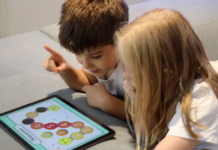By: Lynae M. Brayboy, Katryna McCoy, Sneha Thamotharan, Emily Zhu, Gabriela Gil, and Christopher Houck
Published in Current Opinion in Obstetrics and Gynecology
October 2018
TECHNOLOGY AND SEXUAL HEALTH EDUCATION
Although the number of formal sex education programs has declined across the United States in recent years, there has also been a corresponding decline in adolescent birth rates and increased contraceptive use [14■,15]. It has been suggested that improvements in sexual health-related outcomes among adolescents may be attributed to the rise of technology and the increased access to information that comes with increasingly mobile knowledge platforms. Approximately 95% of teens in the United States own or have access to a smartphone, and 45% of teens say they are online constantly [16].
As the need to provide more comprehensive sexual education to adolescents grows, new platforms have arisen that have been shown to be efficient and accurate modes of information. One such avenue is the rise of technology-based interventions alternatively referred to as electronic health, mHealth, or digital media; these programs tend to center around technology such as computers, smartphones, or text messaging [17■■]. Unlike more traditional, formal sexual education approaches, incorporating more technology-based interventions could allow for larger impacts as a result of larger audiences at a relatively low cost, increased privacy for teens, and more flexibility in tailoring messages toward specific populations [17■■]. As technology becomes a dominant factor in adolescent lives, it is imperative to consider the use of new media in the realm of sexual health education.
There are various uses of technology for adolescents seeking sexual health information or tools to aid in their reproductive health. Two common implementations of technology that have emerged include the use of text messages and both mobile and computer applications. Text messaging has become a common mode of health communication because it is immediate and convenient. Combined with the anonymity it provides to adolescents, incorporating text messages in interventions has become popular to communicate about sexual health topics. Text messages have been used to increase access to sexual health care within the adolescent population; a study called SEXINFO directed patients to local clinics via text, and approximately 11% of clinic patients had found the clinic via the text messaging program by the end of the study [18]. Another texting program called ‘Text in the City’ allowed teens to ask anonymous questions regarding sexual health to a reliable source. In a 6-month evaluation of the program, 500 questions were sent, with the majority of questions regarding the correct use of birth control [19].Yet another program centering around short message service text messages is Adolescent/Youth Reproductive Mobile Access and Delivery Initiative for Love and Life Outcomes study, which is a platform that is designed to provide essential facts and address misconceptions about sexual and reproductive health issues among youth such as puberty, sex and pregnancy, and contraception [20]. Clearly, numerous interventions involving text messaging have been created to educate adolescents on sexual health issues and have demonstrated positive results.
Online sites and mobile phone applications promote sexual health education to adolescents and provide tracking functions directed toward sexual and reproductive activities. These applications tend to only reinforce sex stereotypes and do not necessarily contribute to the promotion of healthy behaviors. On the other hand, some applications work to increase sexual health education and promote healthy behaviors. One such smartphone app is Girl Talk; this app directed toward adolescent girls aimed to improve knowledge on reproductive health issues [11]. Through a prospective study, researchers found that the reported usefulness of Girl Talk as a sexual health application increased significantly and knowledge improved most in topics such as anatomy and physiology and STI prevention [11]. Although most participants (76.5%) stated that they had been previously exposed to sexual health information, 94.1% of participants stated that Girl Talk provided new information than outlined in health class [11]. Another recent study by Mesheriakova and Tebb [21■■]showed that an iPad-based application was also effective at increasing fund of knowledge in girls 12–18 with increases of 10% on the average on baseline sexual health knowledge assessment. This suggests that applications that are directed toward a particular audience and provide comprehensive, accurate information can be successful in increasing awareness among adolescents.
Although much has been written on existing technologies that involve sexual and reproductive health education, few analyses exist on the efficacy of these programs. A study that compared the time to treat Chlamydia using normal communication methods (phone or clinic visit) versus text messaging found that individuals notified by text were diagnosed and treated faster [22]. One meta-analysis conducted found positive effects of computer-based programs on improving sexual health knowledge, safer sex, and safer sexual behavior among both adolescents and adults [23]. Another meta-analysis that focused on new media interventions for increasing condom use and STI testing found that these interventions produced the largest effect when targeting female adolescents [24]. A recent meta-analysis analyzing the effects of technology-based sexual health interventions among youth found significant effects on condom use and abstinence, alongside greater effects in increasing sexual health knowledge and safer sex norms and attitudes when comparing control groups to intervention groups [17■■]. Ultimately, technology-based interventions have been demonstrated to have positive effects especially when targeted and tailored toward specific populations; however, challenges that have arisen with these programs involve the gradual decrease in effect over time alongside the lack of standardization in design features and identification of specific behavioral change techniques that prove effective [17■■].
Source: https://www.ncbi.nlm.nih.gov/pmc/articles/PMC7123652/
Why this article: The journal article gives a quick comprehensive understanding of the current state of sexual education in the U.S, names populations that are in need of most care, and directly discusses the use of new technology in sexual health education.
Studies show that mobile apps, tablet apps, and text message services are at the forefront of the education adolescent girls are receiving outside of the classroom. Adolescents, all over the board, report an increase in knowledge of sexual health (ex. increase use of contraceptives such as condoms and birth controll, quicker response to STIs, promote healthy behaviour). There are mainstream apps as well that the study deems to be reinforcing mainstream and harmfull stereotypes of sex.





I know you’ve touched on the use of technology with Sex Ed in previous articles, and I think that is truly the most effective way it is going to be taught in today’s world. One parent or one teacher can’t think of everything when it comes to educating kids on such an important topic. These apps and websites should include information and resources on where people can get access to things like contraceptives, HIV testing, or just general questions or professionals to talk to.
I like how you rate different articles so that we can easily find the important message. I believe that programs and applications can be beneficial to sex education. However, I’m skeptical about whether it can replace the talk from teachers, educators, or parents. I think sex education is not only about knowledge. It’s also about support. From comprehensive sex education from family and school, kids can feel a sense of safety and support. When they met problems in their sexual experience, they are more likely to seek help from school and family.
You make a really(!) good point that I’ve been neglecting through my research. I didn’t think about the support system of real people. Thanks for bringing that up